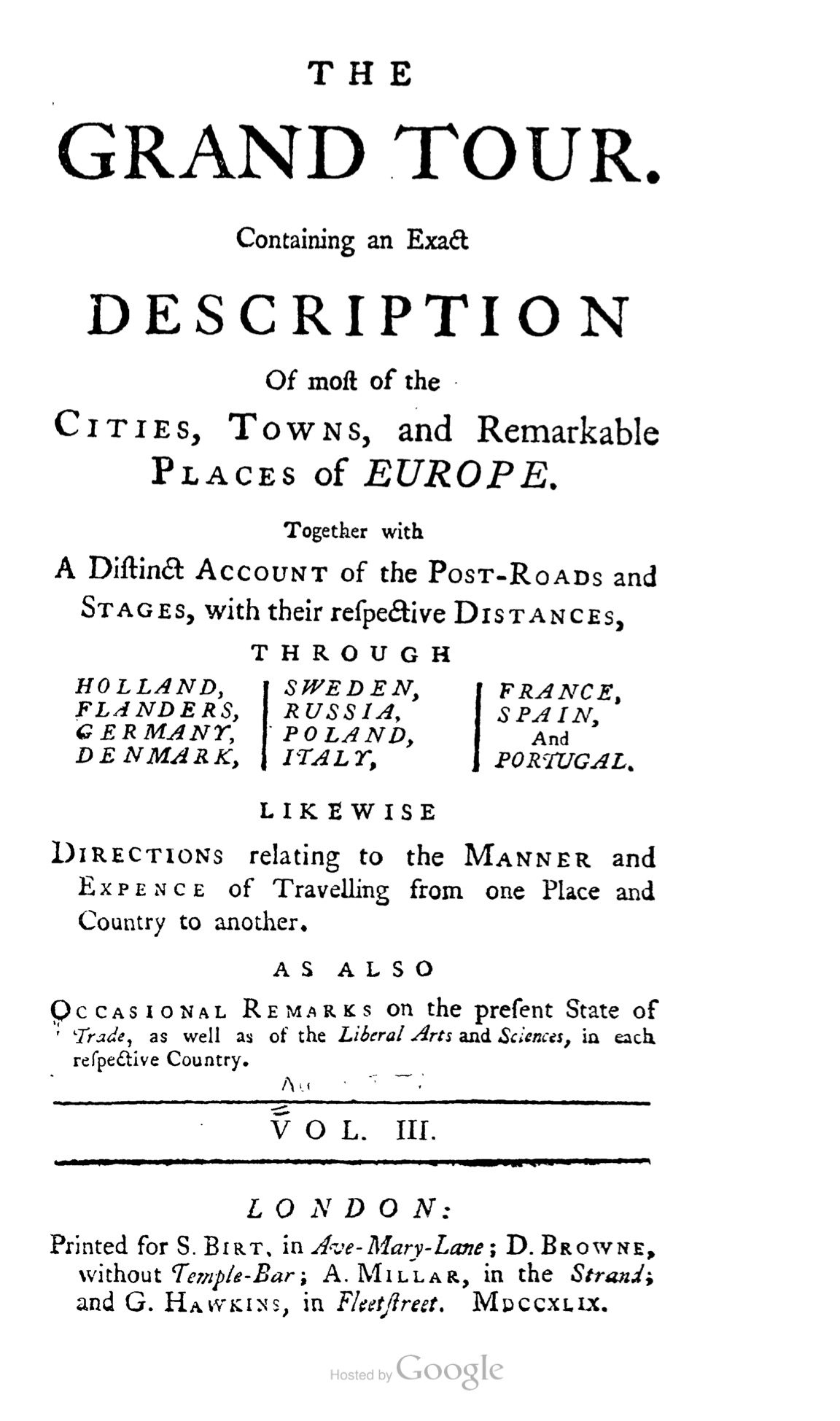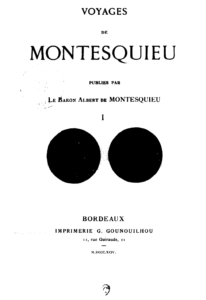
Charles-Louis de Montesquieu, better known today as a political philosopher, was also a judge and a writer. Besides practicing the law, he devoted himself to studying and writing. By the 1720s, he became an established writer and thinker, and in 1728 he embarked on a grand tour of Europe. Voyage en Italie was written in journal form, a style popular at the time for published travel accounts. Montesquieu’s interests range from the geographical, historical and social to the architectural and artistic characteristics of monuments that he visited. As for the Camposanto, it is notable that Montesquieu mentions not only the legend of the holy earth, but also writes a brief critique of the paintings. Although his description of the paintings is selective, Montesquieu seems to have found “Triumph of the Death” and “Hell” especially impressive. / DJ
Montesquieu, Voyages de Montesquieu (1728) (excerpt)
Edition: Charles de Montesquieu, Voyages de Montesquieu, ed. Albert de Montesquieu, 2 vols. (Bordeaux: Gounouilhou, 1894-1896), 1:158-159.
Transcription
“Au-dehors de l’Église, et à coté, est le Campo-Santo. C’est un cimetière fait de la terre que les vaisseaux pisans portèrent autrefois de la Palestine, et qu’on dit avoir eu autrefois la propriété de faire enfler les corps et de les dessécher aussitôt. Le cimitière est carré-long, fermé d’une muraille, autour de laquelle règne une galerie en forme de cloître, parée de marbre. C’est là que l’on trouve un beau recueil de peinture ancienne, parce que les murs de ces galeries sont peints à fresque, et on y voit bien à plein le mauvais goût de ce temps-là. C’est là que l’on voit les Anges en courroux traîner en Enfer les rois, reines, prélats, papes, moines et prêtres, sans rémission; mais on n’y voit point de peintre. On voit que l’effort du génie a été de trouver des figures de Diables les plus affreuses. Il y a aussi des peintures de Giotto, qui paroissent un peu d’un meilleur goût que les autres. Il y a tout un côté qui est celui qui est exposé au midi, qui a été fait par un seul peintre. L’autre côté a été fait par plusieurs et en grand nombre. On dit qu’ils mouroient tous parce qu’ils travailloient dans un lieu exposé au nord. Il y a un bout qui n’étoit pas fini, et qu’un peintre plus moderne a voulu finir dans le goût ancien; mais il n’a attrapée ni le goût ancien, ni le nouveau.”
Translation
Outside the Church, and next to it, is the Campo-Santo. It is a cemetery made of the earth that Pisan ships once brought from Palestine; this earth is said to have had the property of making bodies swell and dry up immediately. The cemetery is square, enclosed by a wall, around which is a gallery in the shape of a cloister adorned with marble. It is there that we find a beautiful collection of old paintings because the walls of these galleries are painted in fresco, and one can well see the bad taste of that time. It is there that we see the angels in wrath dragging the kings, queens, prelates, popes, monks and priests into Hell without mercy; but one does not see any painter there. One can see that the effort of genius was to find the most dreadful figures of devils. There are also paintings by Giotto, which seem to be in slightly better taste than the others. There is a whole side, which is exposed to the south, made by a single painter. The other side was done by several painters and in great number. It is said that they all died because they worked in a place exposed to the north. There is a part that was not finished, and which a more modern painter wanted to finish in the old taste; but he captured neither old nor new taste.
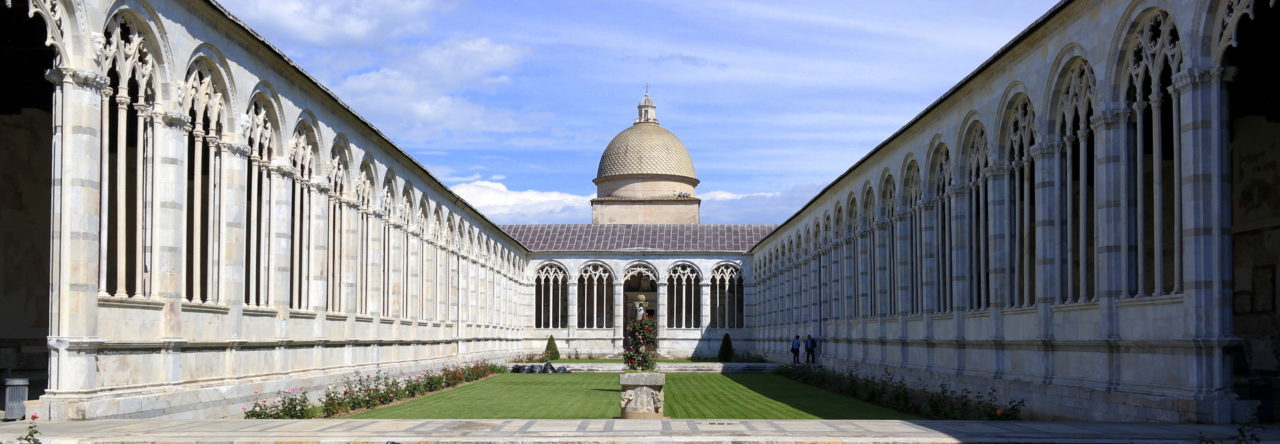
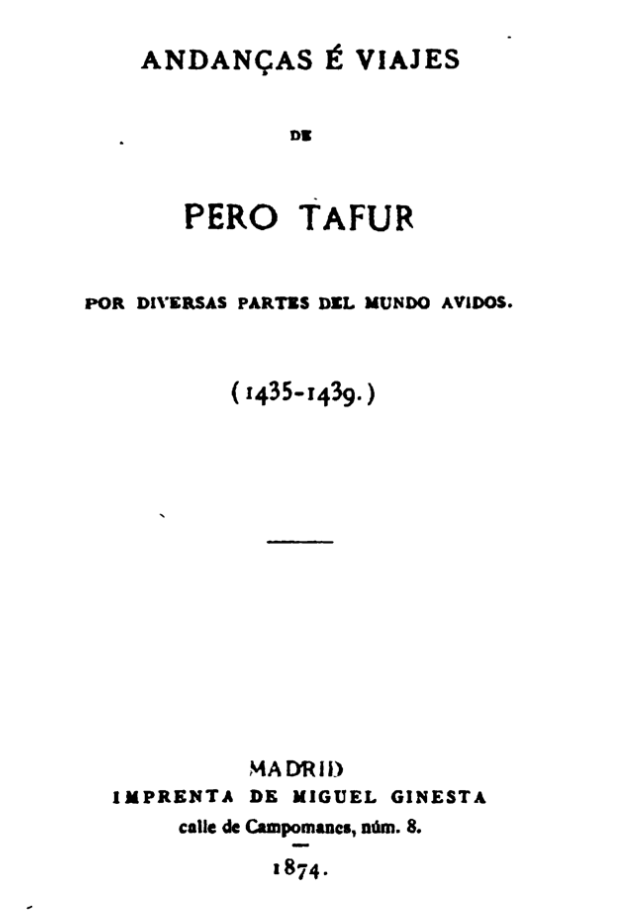 Pero Tafur (c. 1410 –c. 1484) was a nobleman from a Castilian family who participated in military campaigns of the Reconquista before he undertook a long journey around the Mediterrenean and across several parts of central Europe and Italy between 1436 and 1439. Although he visited Jerusalem and Palestine in the first part of his trip, his principal interest was more as an adventurer and religious themes played no particular role. Tafur composed the written account of his journey only several yeas later, in 1453/54. While he visited Pisa on the way to Rome, at the very beginning of his trip, the lengthy description of the city that we reproduce here is included in the very last chapters of the book, when Tafur was en route to Spain. His account of Pisa’s history is very characteristic for the entire book, as it relies exclusively on heresay and is full of phantastic and historically impossible claims. The central aim of this highly ficticious narrative is to give an explanation for Pisa’s decline, from a powerful sea republic to a satellite of Florence. In this framework, Pisa’s decision to sell Jerusalem is seen as the principle reason for its ultimate defeat. Therefore, the Camposanto plays a prominent role here, as a “container” of the holy earth. / DG
Pero Tafur (c. 1410 –c. 1484) was a nobleman from a Castilian family who participated in military campaigns of the Reconquista before he undertook a long journey around the Mediterrenean and across several parts of central Europe and Italy between 1436 and 1439. Although he visited Jerusalem and Palestine in the first part of his trip, his principal interest was more as an adventurer and religious themes played no particular role. Tafur composed the written account of his journey only several yeas later, in 1453/54. While he visited Pisa on the way to Rome, at the very beginning of his trip, the lengthy description of the city that we reproduce here is included in the very last chapters of the book, when Tafur was en route to Spain. His account of Pisa’s history is very characteristic for the entire book, as it relies exclusively on heresay and is full of phantastic and historically impossible claims. The central aim of this highly ficticious narrative is to give an explanation for Pisa’s decline, from a powerful sea republic to a satellite of Florence. In this framework, Pisa’s decision to sell Jerusalem is seen as the principle reason for its ultimate defeat. Therefore, the Camposanto plays a prominent role here, as a “container” of the holy earth. / DG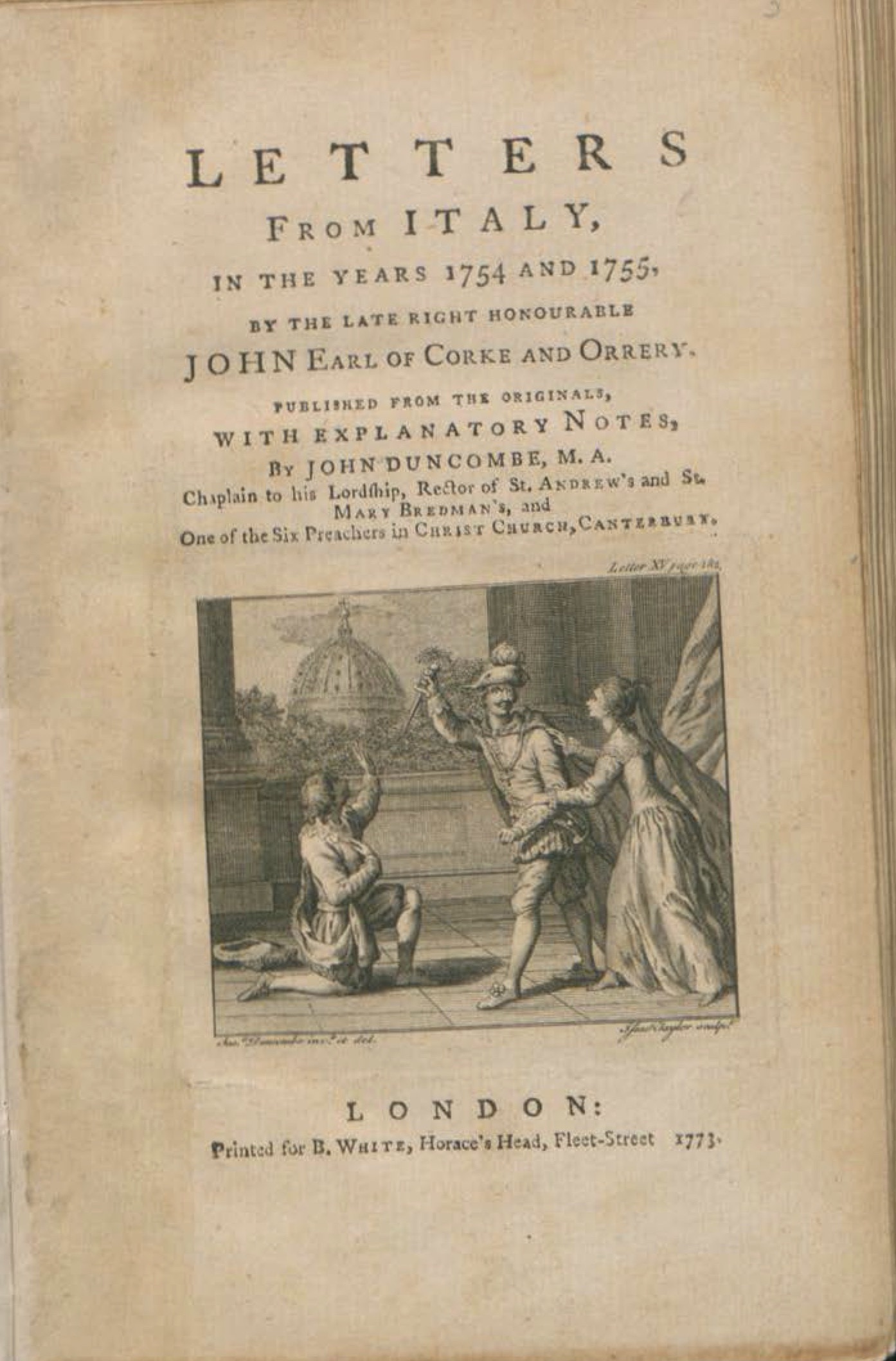
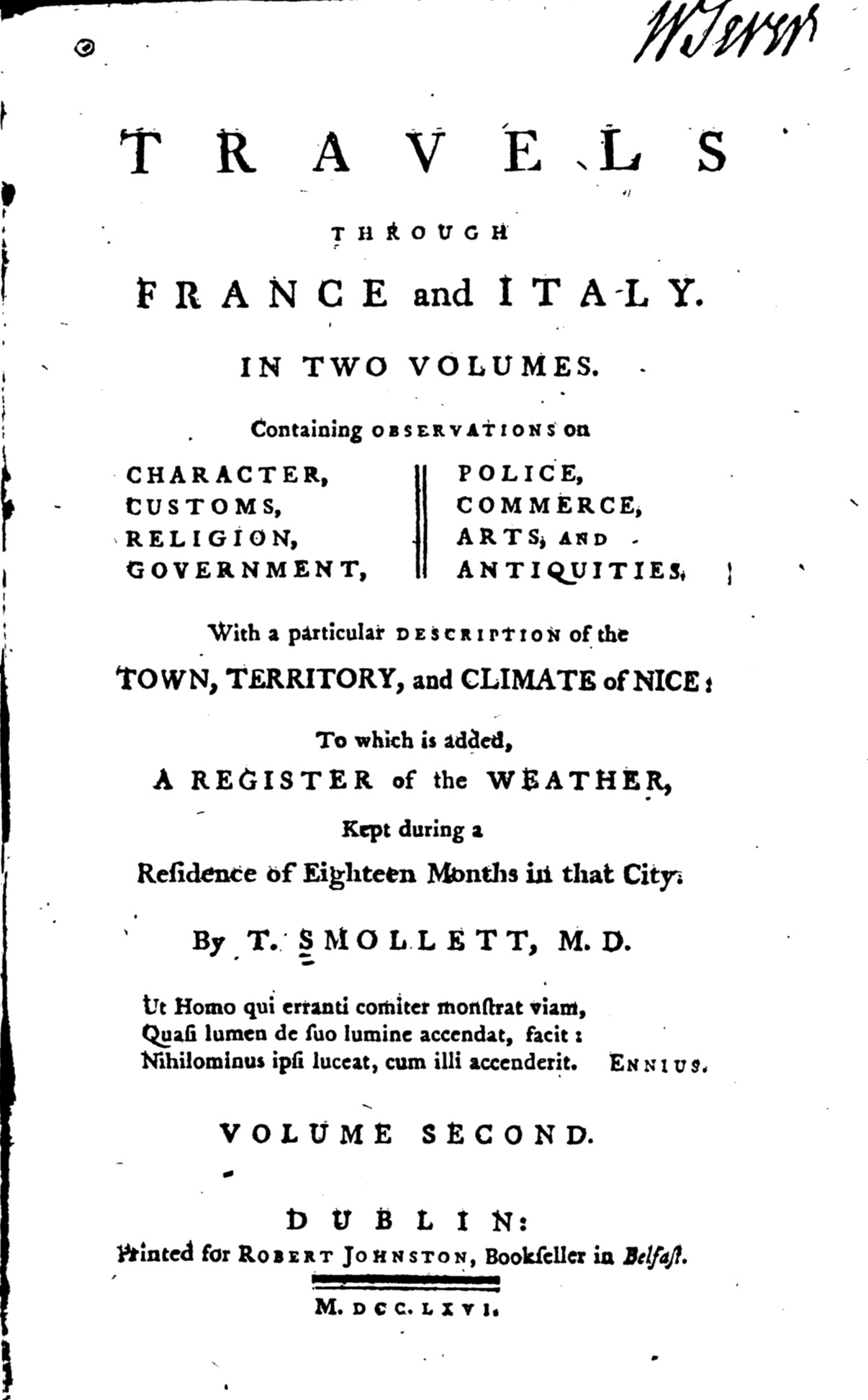
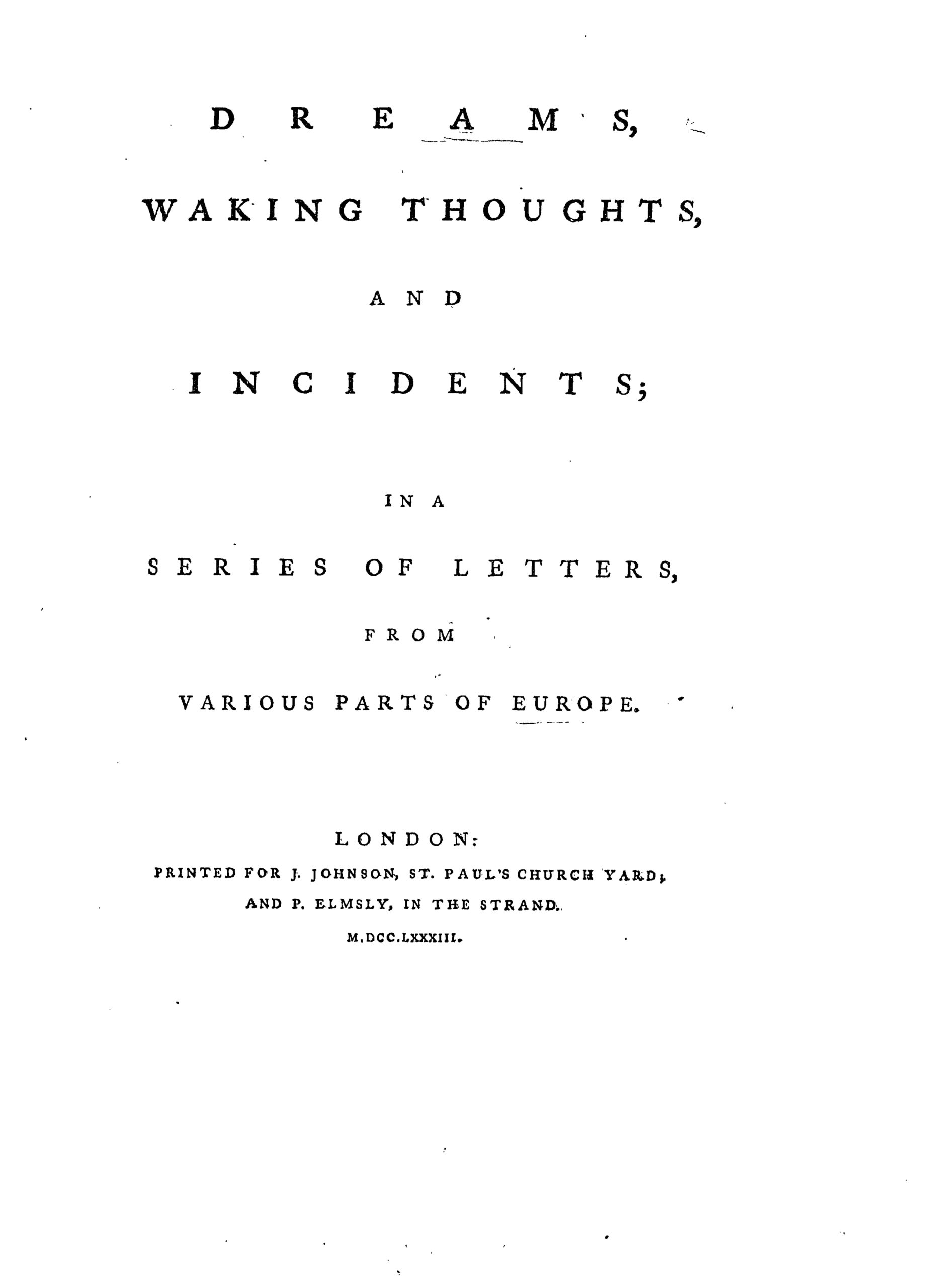 William Beckford’s travelogue may be the most literary among the travel literature compiled for this blog. Beckford was a novelist, well-known for his Gothic novel Vathek, as well as an art collector. His book is composed of letters from different parts of Europe, written as he traveled.
William Beckford’s travelogue may be the most literary among the travel literature compiled for this blog. Beckford was a novelist, well-known for his Gothic novel Vathek, as well as an art collector. His book is composed of letters from different parts of Europe, written as he traveled.